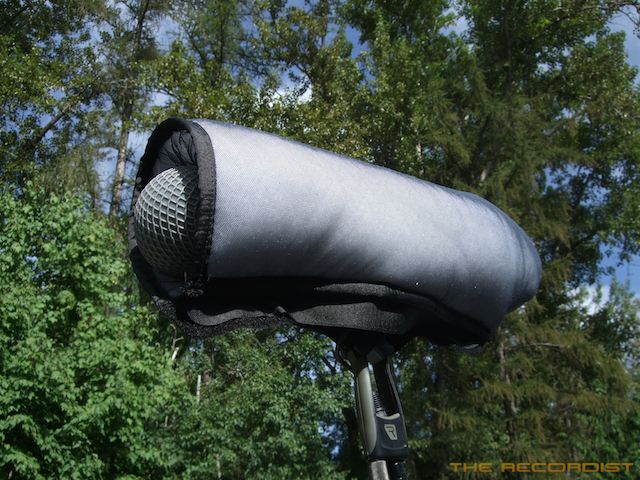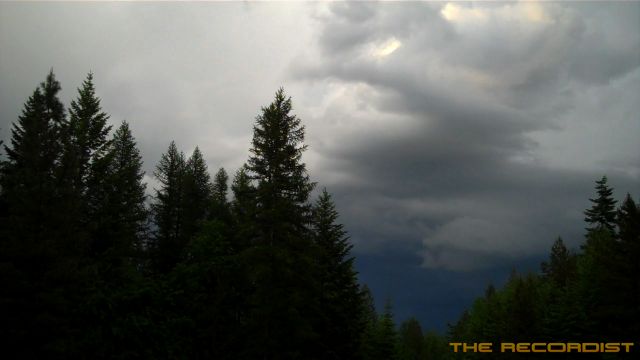[vimeo]http://vimeo.com/27519835[/vimeo]
The Recordist has released North Country Rain HD, a new sfx library loaded with rain sounds recorded by Frank Bry over the last 5 years.
This new collection contains 38 24-bit/96khz incredible rain sound effects from North Idaho. Recorded on the ranch and other locations including farms, forests, concrete floors, pavement, fields of green and patios. Heavy, soft, blustery and sometimes icy, the rain selections included were meticulously edited and chosen from over 20 hours of raw material.
I’ve spent the last 5 years recording the nourishing rain from the lush and beautiful panhandle of Idaho which gets plenty of rainfall during the spring and fall seasons. Unpredictable and often fierce, the weather patterns here produce some of the most incredible rain storms I have ever experienced. From intense downpours to gentle showers on trees, this collection of rain goodness is sure to inspire.
North Country Rain HD is available at $45. Includes 38 WAV files at 96kHz/24-Bit into a 2.1GB package. Below is a Q&A with Frank, talking about this new release:

DS: What were your main concerns regarding rain recording? Do you have any tips for recording these type of sounds?
Frank: Not getting the microphones soaking wet was my main concern. There is also the issue of the rain hitting the Windjammers. I experimented with many different ways of recording in the rain. Of course, they best way to not get rain on the microphones is placing them under something like a roof eave or placing them in a window or doorway.
Wind was also a big issue. Many of the storms that roll in here in North Idaho have very strong wind. Some of the best rain comes after the wind has died down, but recording rain when it is very windy can be tricky. The rain and wind combination can sound like white noise sometimes. I tried different EQ settings every now and then to fix it, but most of the time it was unusable.
My other concern was other noises—animals, cars, trains, boats, you name it. Even though it is very quiet here most of the time there can be background noise. Even though I enjoy my sleep, I did get up in the middle of the night and record. It’s a fantastic time to record. Dead quiet and the animals also asleep (with the exception of the time a skunk was wide awake and lurking around). I do believe skunks are nocturnal animals.
One tip: be patient. I had to learn that one with rain. Sometimes you get good recordings and sometimes you don’t. That’s life.

DS: What kind of gear you used on the recordings? also, did you use something specially for protecting your gear on the rain?
Frank: When I started recording the rain for this library back in 2007 I was using a Fostex FR-2 and a Audio Technica AT-835ST and also at times my Sanken CSS-5. I just purchased the CSS-5 so I was shy about using it out in the rain. I started recording with small portable recorders like the Sony PCM-D1 and D-50. Some people say these are not professional quality but I disagree when it comes to recording rain. To me, these units work wonderfully well for rain recording. In my opinion. the Sony recorders have a nice bright top end that works nicely with rain They also are small enough to hold in your hand and crouch over it while rain drips off roofs into puddles. I used my body more than once to keep the little recorders dry.
When I was using the SD-702 and the Sanken CSS-5 or AT-835ST, the technique for protecting gear that worked out the best was holding a stretched out towel over the microphone. This was tricky because, depending on the amount of rain falling, I had to vary the distance between the towel and the microphone otherwise the sound of the rain drops on the towel was audible.
I also tried various rain covers like the Rycote Duck and the Remote Audio Rainman Rain Cover. My favorite is the Rainman. I just picked this piece up recently so I have not used it that much but so far it has worked well for light to medium rain. I was not thrilled with the Rycote Duck. This is the first time I have ever been disappointed with a Rycote product. I don’t want to be too harsh but what were they thinking? This thing makes more noise than the rain hitting the Windjammer directly. It sounded like popcorn popping.
DS: Rain sound varies depending on the place, surface and of course the power of the event. I wonder what kind of locations, variations and surfaces you experimented with.
Frank: I did a lot of rain recording while waiting for thunderstorms to arrive. Sometimes I would just set the microphones up outside my front door like I usually do when recording thunder. I just let the recorder run. I would move to different locations now and then. Once I moved into my garage and got some great heavy rain hitting my dirt driveway. The wind was making the rain fall across the front of my garage, but not into it, so the microphone was safe and dry. The garage roof is high enough so that the sound it made did not get into the recordings.

I did quite a bit of the recording right outside the door that faces my large raised wood deck. There is a four-foot overhang from the roof so the microphone stays dry and the drips on the deck sound fantastic. When the rain is heavy it really pours off the roof and splats on the deck. Great sound!
I also did a lot of recording under the deck. The deck is 12 feet off the ground and under it is a small stone and gravel patio-like area. The rain dripping from the deck surface made a wonderful dripping sound. I had to get in the right location so the gear and I did not get soaked. Sometimes getting wet was hard to avoid.
There are a few dripping rain sounds in the library. I recorded most of these at locations where there was a roof. The best dripping rain falls at the end of winter and start of spring. A storm system can roll in and it can get really cold for hour and drop what we call gropple. Gropple are tiny snowballs the size of a pea and the can build up on a cold metal roof. After the storm passes and the sun comes out they melt slowly and drip for hours. The drips sound cool because they are in between ice and water. There is usually no rain falling so you get clean drips.
DS: Is there a particular anecdote you have from your sessions for this library?
Frank: Once I tried to get better recordings of rain falling from the large Cottonwood trees out behind the house. I’ve tried many times and had mixed success. When the wind gusts slightly after a heavy rainstorm, the sound of the water falling off the very tall trees is awesome. I used the Rainman for those sessions and got some shorter than usual sounds because of background noises in the takes. It is difficult to plan this correctly because it’s right after the rain has fallen. It’s luck most of the time when I get good recordings of it. I will keep trying.

DS: How was the process of editing and choosing content from 20 hours of rain?
Frank: This was very long and difficult process. Recording rain is a hit and miss situation most of the time. I had to listen to hours and hours of thunder and rain recordings. I had to use EQ and dynamic compression sometimes to make a track work. I did realized that if I had to work too hard on fixing that it was probably not worth the time. I threw away many hours of material. Maybe someday I will go back through them and try again. I kept great notes on which takes needed what process and what the outcome was.
On a personal note. I would like to say that as a sound designer and recordist I love recording rain. It’s almost musical to me. Something about it calms me and I feel everything is going to be all right. I also know that without rain we would not survive. When I hear it’s going to rain I say to myself, “Today is going to be a great day,” Water is life.
Great Q&A. its very fun I’m editing some rain recordings today from an improvised recording session at my new home. I covered the mics with an old duvet and it worked pretty well. Love Rain.